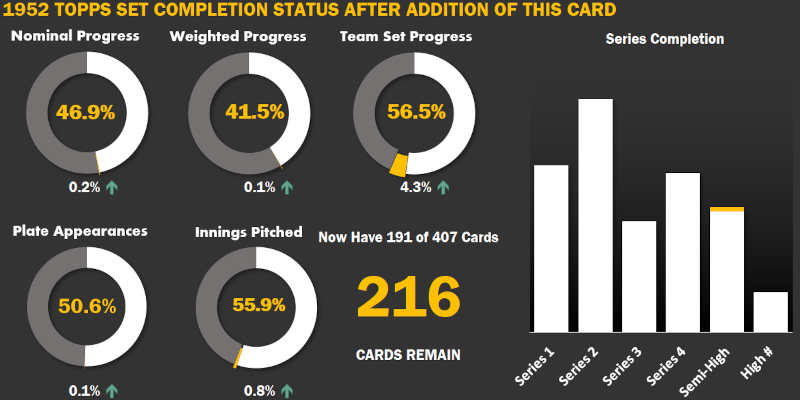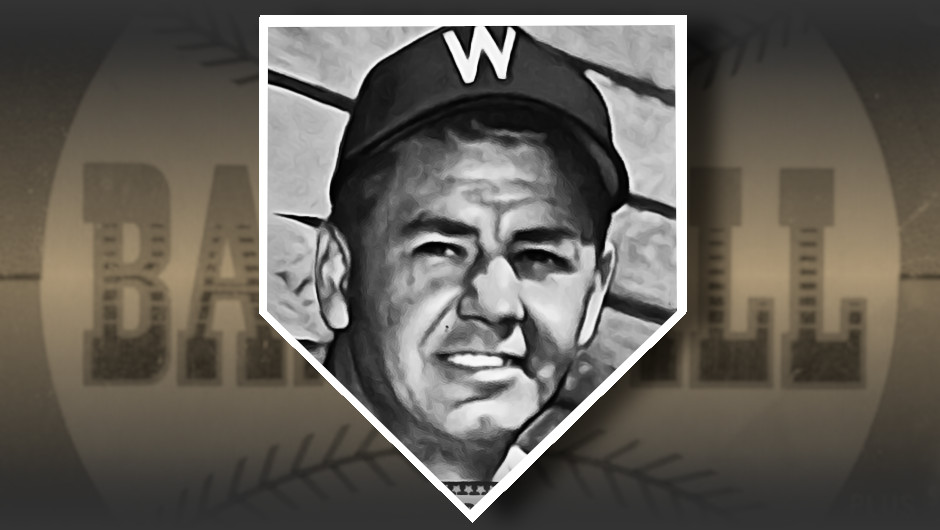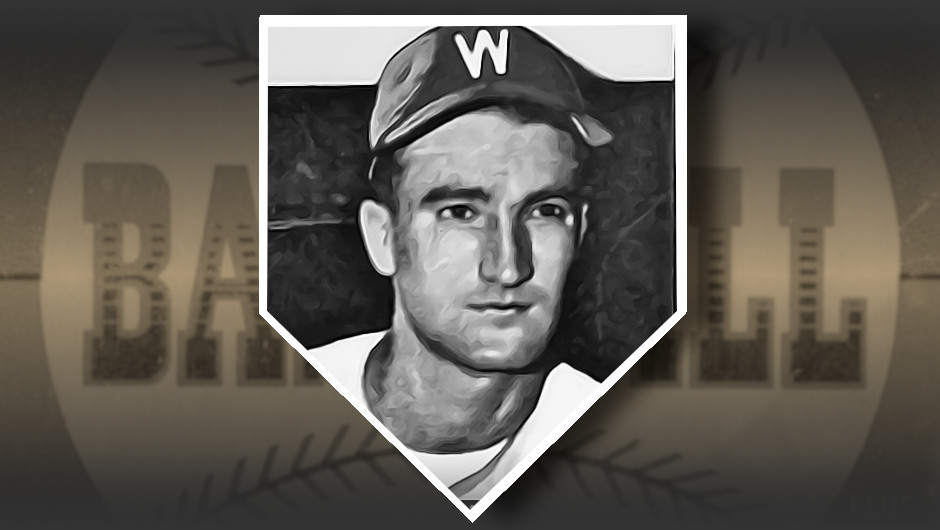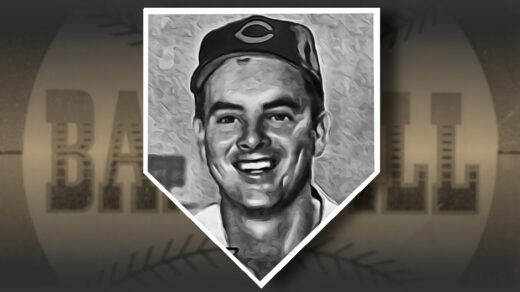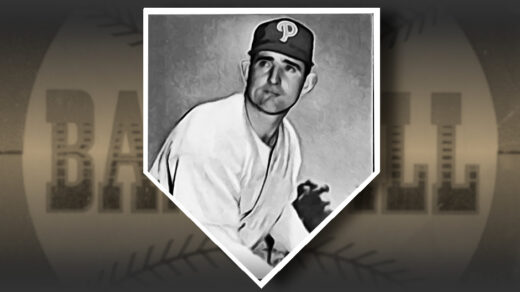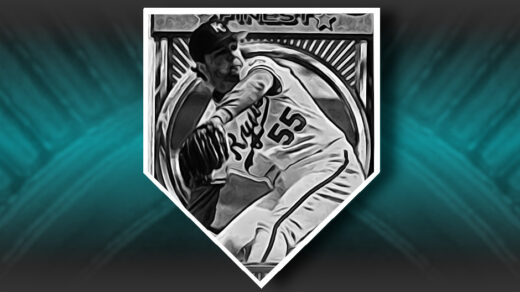You can feel the air leaving the stadium when the first two batters of a visiting team get on base. Optimists don’t mind, as this is only setting the stage for a triple play. It gets even more exciting when this defensive marvel ends the game as a walk-off. Even the scoresheet gets excited, exclaiming “OOO” to denote the occaision.
SABR maintains a searchable database of triple plays. Searching through it, one can find all kinds of great information. The St. Louis Cardinals have turned more triple plays (44) than any other team. The 5-4-3 triple play (third base to second to first) is the most common, accounting for 100 of the game’s 735 such plays. One play saw a ball change hands 10 different times before the final out was recorded. Mickey Mantle even took part in turning a triple play while playing first base in his final season.
There have been 27 “walk-off” triple plays in MLB history in which the three outs comprising the play also end the game. Three of these have involved one of the pitcher, one of the least likely positions to take part in a triple play, recording an out.
One of these instances took place on May 22, 1953. Bob Porterfield was the starting pitcher for the Washington Senators and had a 12-3 game against the visiting Yankees well in hand heading into the ninth inning. Billy Martin and Andy Carey led off the New York half of the inning with back-to-back singles. Johnny Mize made it three in a row, driving home Martin and leaving men on first and second base. Irv Noren, a former Senator and the Yankees’ power-hitting leadoff man, came to the plate to keep the rally going. He promptly hit a laser back to Porterfield who caught the ball. Carey and a pinch runner for Mize had taken off as soon as the ball left the bat. Porterfield fired the ball to first base to record out number two. First baseman Mickey Vernon sent the ball to shortstop Pete Runnels who tagged out the retreating Carey. Game over. Not only had Porterfield gotten the win, pitched a complete game, and started a triple play, he had gone 2 for 5 at the plate and taken his batting average into a tie for team lead.
Fun Fact: When they were teammates Bob Porterfield and Irv Noren used to sing together in a barbershop quartet.

Porterfield’s stats show promise that was cut short by injuries. These included getting beaned by a pitch, having one of his own hit him on a comeback line drive, and suffering burns from an exploding matchbook. His advanced metrics show a better than average pitcher who ranks well inside the top third of talent appearing in the 1952 Topps checklist. Further helping his case is the fact that he threw a shutout in 12% of all games in which he was the starting pitcher, a better mark than any other member of the ’52 Topps checklist who started more than one game.
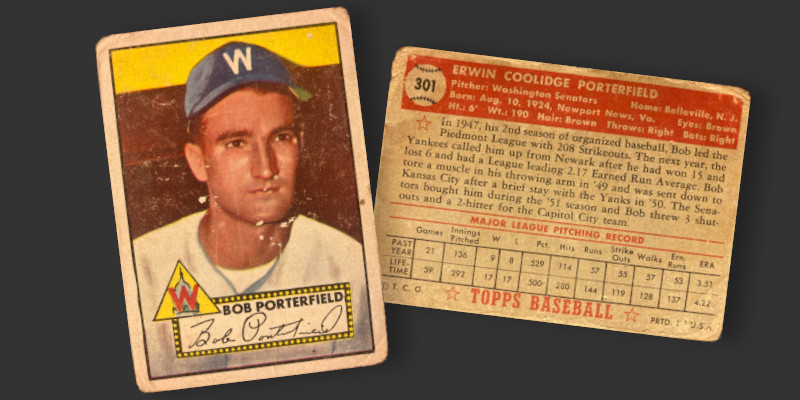
My ’52 Porterfield card is beat up, but at least it is well-centered. The card has heavily rounded corners, tons of softness and nicks along the borders, and some minor paper loss on the front. Given the way kids treated their cards in this era, I am almost certain that this card was a regular component of baseball card flipping contests. In this game participants take turns flinging baseball cards towards a wall several feet away. The goal is to land the closest to the wall without having your card knocked out of position by subsequent players. Whoever has the card closest to the target at the end of a round wins all the cards tossed. Bob Porterfield was traded to five different teams and this specific card probably went through at least as many schoolyard pockets as a result of flipping games.
